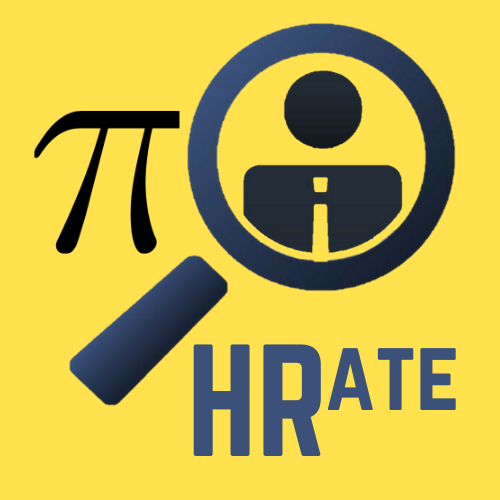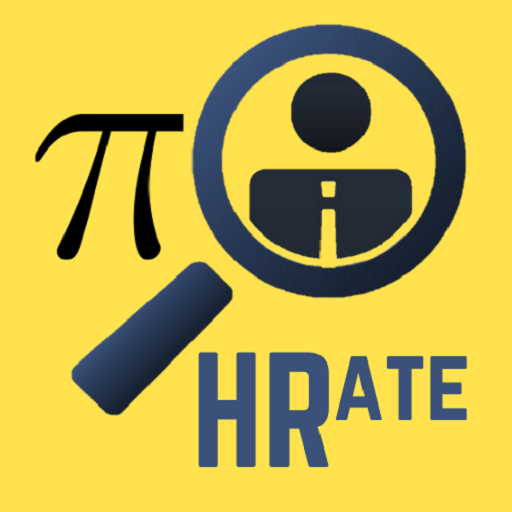Revolutionizing Candidate Sourcing: The Impact of AI and Automation

- Efficient Resume Screening
- Reducing Bias in Recruitment
- Enhancing Candidate Engagement with Chatbots
- Personalization and Customization
- Data-Driven Decision-Making
- Optimizing Time and Resources
- Summary
- Frequently Asked Questions (FAQ)
- What is the role of AI in candidate sourcing?
- How does resume screening software work?
- What are the benefits of chatbots in candidate engagement?
- How can AI reduce bias in recruitment?
- What is data-driven decision-making in candidate sourcing?
- How does AI contribute to optimizing time and resources in candidate sourcing?
- Can AI be integrated with existing recruitment processes?
- How can organizations ensure the ethical use of AI in recruitment?
In the dynamic realm of recruitment, the symbiotic relationship between human expertise and technological innovation is transforming the traditional paradigms of candidate sourcing. The advent of Artificial Intelligence (AI) and automation has heralded a new era, offering unprecedented efficiency and precision in the initial stages of the hiring process. This article delves into the impact of AI tools, particularly resume screening software and chatbots, on candidate sourcing—a frontier where smart technologies are not just enhancing operational speed but also fostering a more inclusive and personalized approach to talent acquisition.
As organizations grapple with the challenges of a competitive job market, the strategic incorporation of AI becomes imperative for staying ahead of the curve. The ability of resume screening software to rapidly analyze vast pools of candidate data, coupled with the conversational prowess of chatbots in facilitating seamless initial interactions, stands as a testament to the transformative power of these technologies. Beyond mere automation, these tools promise to revolutionize the recruitment landscape, offering solutions to age-old challenges such as bias in hiring, resource optimization, and the quest for the elusive perfect match between employer and employee. In this exploration of AI and automation in candidate sourcing, we uncover how these innovations are reshaping the very foundations of talent acquisition, promising a future where recruitment is not just efficient but also profoundly human-centric.
Efficient Resume Screening
The traditional process of reviewing resumes can be a daunting and time-consuming task for recruiters, often resulting in delays and potential oversights. Enter efficient resume screening powered by Artificial Intelligence (AI), a game-changer that is revolutionizing the initial stages of candidate evaluation. AI-driven tools utilize advanced algorithms to swiftly analyze and categorize resumes based on predefined criteria, significantly reducing the time and effort required for the initial screening process. These technologies not only enhance speed but also bring a level of objectivity to the evaluation, ensuring that each candidate is assessed based on merit.
For example, leading AI-based resume screening platforms employ natural language processing (NLP) to extract key information from resumes, such as relevant skills, qualifications, and work experience. These tools can then match the extracted data against job requirements, allowing recruiters to swiftly identify candidates who align closely with the desired criteria. This process not only accelerates the screening phase but also minimizes the risk of overlooking qualified candidates who may have been lost in the traditional manual review.
Moreover, AI-enabled resume screening is adept at handling large volumes of applications seamlessly. In scenarios where a high number of applicants vie for a single position, manual screening becomes an arduous and impractical task. AI tools excel in this environment, effortlessly managing large datasets and providing recruiters with a manageable shortlist of candidates who meet the specified qualifications. This not only expedites the hiring timeline but also allows recruiters to allocate their time more strategically, focusing on engaging with top-tier candidates and refining the selection process.
AI tools are also instrumental in mitigating unconscious biases during resume screening. Human bias, whether conscious or unconscious, can influence decision-making and inadvertently disadvantage certain candidates. AI systems, being objective and data-driven, can help standardize the screening process, ensuring that each resume is evaluated based on merit rather than subjective factors. This not only aligns with the principles of fair hiring but also contributes to creating a diverse and inclusive workforce.
Efficient resume screening powered by AI is a transformative force in the recruitment landscape. By automating and optimizing the initial stages of candidate evaluation, these tools empower recruiters to make quicker, more informed decisions, ultimately leading to a more efficient and fair hiring process. As the technology continues to evolve, its impact on streamlining recruitment processes is becoming increasingly evident, marking a paradigm shift in the way organizations identify and engage top talent.
Reducing Bias in Recruitment
One of the persistent challenges in the recruitment process has been the presence of bias, both conscious and unconscious, which can inadvertently influence hiring decisions and hinder diversity and inclusion efforts. Artificial Intelligence (AI) is emerging as a powerful tool to address this issue, offering a data-driven and objective approach to reducing bias in recruitment. By leveraging AI in various stages of the hiring process, organizations can create a more level playing field for candidates, ensuring that selection is based on qualifications and merit rather than subjective factors.
For instance, AI-powered resume screening tools can be programmed to focus solely on relevant qualifications, skills, and experiences without being influenced by demographic information. This helps eliminate biases related to gender, ethnicity, age, or other protected characteristics. By standardizing the screening criteria and focusing on job-related attributes, AI tools contribute to a fairer and more equitable candidate evaluation process.
Additionally, AI-driven interview tools and chatbots can play a crucial role in minimizing bias during the interview stage. These technologies can pose standardized questions to all candidates, ensuring consistency and fairness. By evaluating responses based on predetermined criteria, AI interview tools reduce the impact of unconscious biases that may arise in traditional, human-led interviews. This fosters an environment where candidates are assessed solely on their competencies and qualifications.
Moreover, some AI platforms are designed to identify and mitigate language biases in job descriptions. By analyzing the language used in job postings, these tools can suggest changes to make the language more neutral and appealing to a diverse range of candidates. This not only attracts a broader pool of applicants but also ensures that the language used in job descriptions does not unintentionally discourage individuals from underrepresented groups.
In the context of talent sourcing, AI can assist in creating diverse candidate pools by identifying potential candidates from a wide range of sources. Machine learning algorithms can analyze historical hiring data to identify patterns and trends related to successful hires, helping recruiters proactively reach out to candidates with diverse backgrounds and experiences.
AI is proving to be a catalyst for reducing bias in recruitment. By automating and standardizing processes, AI tools help organizations move towards a more equitable and inclusive hiring environment. As these technologies continue to evolve, they hold the promise of fostering diversity and creating workplaces that are reflective of a wide range of talents and perspectives. However, it is crucial for organizations to continually monitor and refine AI algorithms to ensure they do not inadvertently introduce or perpetuate biases in the recruitment process.
Enhancing Candidate Engagement with Chatbots
The role of chatbots in the recruitment process has evolved significantly, with organizations leveraging these AI-driven virtual assistants to enhance candidate engagement from the initial stages of interaction. Chatbots offer a dynamic and responsive interface, providing real-time communication with candidates and streamlining the application process. This not only facilitates a smoother candidate experience but also allows recruiters to efficiently manage high volumes of inquiries.
For example, when a candidate visits a company’s career page, a chatbot can be deployed to greet the candidate and assist in navigating through the available job opportunities. These virtual assistants can answer frequently asked questions, provide information about the company culture, and guide candidates through the application process. By offering immediate and personalized responses, chatbots contribute to a positive candidate experience, making the recruitment journey more user-friendly.
Beyond information dissemination, chatbots play a pivotal role in conducting initial interviews. They can ask predefined questions to assess candidates’ qualifications, skills, and suitability for the position. This not only expedites the screening process but also allows candidates to complete interviews at their convenience, fostering a sense of flexibility in the application process. Companies like Unilever and IBM have successfully integrated chatbots into their recruitment strategies, engaging candidates in interactive conversations that mirror real interview scenarios.
Moreover, chatbots contribute to the 24/7 accessibility of the recruitment process. Candidates, irrespective of their time zone or work schedule, can engage with chatbots at any time. This ensures that potential candidates receive timely responses to their queries, enhancing overall satisfaction and demonstrating the organization’s commitment to candidate-centric communication.
Chatbots are also valuable in talent pipeline management. They can keep candidates informed about the status of their applications, provide updates on the recruitment process, and even offer feedback on unsuccessful applications. This level of transparency and communication not only maintains a positive candidate experience but also helps organizations build a talent pool for future opportunities.
Chatbots are transforming the landscape of candidate engagement by providing a responsive, interactive, and user-friendly interface. Their ability to streamline information, conduct preliminary interviews, ensure 24/7 accessibility, and manage talent pipelines showcases their versatility in enhancing the overall recruitment process. As organizations continue to embrace the benefits of chatbot technology, they position themselves at the forefront of a candidate-centric approach, optimizing engagement and fostering positive impressions that extend beyond the initial recruitment phase.
Personalization and Customization
In the realm of candidate sourcing, personalization and customization have become pivotal elements for organizations aiming to create a unique and engaging experience for potential hires. Leveraging Artificial Intelligence (AI), companies are now able to tailor their interactions with candidates, offering a more personalized journey that goes beyond the conventional, one-size-fits-all approach.
For instance, AI-driven recruitment platforms can analyze data from candidates’ resumes and online profiles to create personalized communication. By addressing candidates by name, highlighting specific skills relevant to the job, and customizing messages based on their professional backgrounds, organizations can make candidates feel seen and valued from the outset. This level of personalization fosters a positive impression and establishes a connection between the candidate and the company.
Customized communication extends to the application process as well. AI-powered chatbots, for example, can guide candidates through the application steps, offering tailored advice and assistance based on their responses. This not only streamlines the application process but also ensures that candidates receive relevant information specific to their inquiries or concerns. By adapting to individual needs and preferences, organizations enhance the overall candidate experience, setting the stage for a more fruitful relationship.
In the talent acquisition landscape, personalization and customization extend to the interview process. AI-driven interview platforms can adapt the questions posed to candidates based on their responses, ensuring that the assessment is tailored to individual strengths and areas of expertise. This personalized approach not only provides a more accurate evaluation but also demonstrates a commitment to understanding the unique qualities each candidate brings to the table.
Moreover, personalized feedback, another aspect of customization, plays a crucial role in enhancing the candidate experience. AI tools can generate personalized feedback based on the assessment of candidates’ skills and performance during the recruitment process. This feedback not only provides valuable insights to candidates but also showcases the organization’s commitment to transparency and constructive communication.
Personalization and customization are becoming integral to effective candidate sourcing. By harnessing the capabilities of AI, organizations can tailor their interactions, communication, and assessments to meet the individual needs of candidates. This not only improves the efficiency of the recruitment process but also contributes to the creation of a positive employer brand, positioning the organization as one that values and respects the unique qualities of each potential hire.
Data-Driven Decision-Making
In the contemporary landscape of candidate sourcing, the integration of data-driven decision-making has emerged as a strategic imperative for organizations aiming to optimize their recruitment processes. By leveraging advanced analytics and Artificial Intelligence (AI), companies can harness the power of data to make more informed and objective decisions at every stage of the hiring journey.
One of the primary applications of data-driven decision-making in candidate sourcing is in the initial resume screening process. AI-driven resume screening tools can analyze large volumes of resumes quickly and objectively, identifying candidates who align closely with the specified job criteria. By basing screening decisions on quantifiable data such as skills, qualifications, and relevant experience, recruiters can ensure a more efficient and unbiased selection process.
Furthermore, organizations can utilize historical data from past recruitment efforts to identify trends and patterns related to successful hires. By analyzing the characteristics and attributes of top-performing employees, AI algorithms can assist recruiters in targeting candidates with similar profiles. This data-driven approach not only streamlines the sourcing process but also enhances the likelihood of making hires that align with the organization’s strategic goals.
Predictive analytics is another powerful tool in data-driven decision-making for candidate sourcing. By analyzing data on candidate performance in assessments, interviews, and other evaluation stages, organizations can predict which candidates are more likely to succeed in specific roles. This predictive capability enables recruiters to focus their efforts on candidates with the highest probability of success, ultimately improving the overall quality of hires.
In addition to optimizing candidate selection, data-driven decision-making extends to the improvement of recruitment strategies. By analyzing data on the sources of successful hires, organizations can allocate resources more effectively to channels that yield the best results. For example, if a particular job board consistently produces high-caliber candidates, recruiters can prioritize that platform in their sourcing efforts, maximizing the return on investment.
Lastly, data-driven decision-making facilitates continuous improvement in the recruitment process. By tracking key performance indicators (KPIs) such as time-to-fill, cost-per-hire, and candidate satisfaction, organizations can identify areas for enhancement. This iterative approach ensures that recruitment strategies evolve based on real-time feedback and measurable outcomes, fostering a more agile and adaptive sourcing process.
Data-driven decision-making is transforming candidate sourcing into a strategic and metrics-driven function. By embracing the capabilities of AI and analytics, organizations can unlock valuable insights that enhance the efficiency, objectivity, and overall effectiveness of their recruitment efforts. As the recruitment landscape continues to evolve, the integration of data-driven decision-making becomes not just an advantage but a necessity for organizations seeking to secure top talent in a competitive market.
Optimizing Time and Resources
Efficiency in candidate sourcing is a critical factor for organizations seeking to secure top talent in a competitive job market. The integration of advanced technologies and strategic approaches plays a pivotal role in optimizing both time and resources throughout the recruitment process.
AI-driven resume screening is a prime example of how organizations can significantly optimize their time and resources. Instead of manually reviewing large volumes of resumes, AI algorithms can swiftly analyze and categorize candidate profiles based on predetermined criteria. This not only expedites the initial screening phase but also allows recruiters to allocate their time more strategically, focusing on engaging with high-potential candidates and refining the selection process.
Automated scheduling tools are another valuable asset in optimizing time and resources. These tools can coordinate interview schedules, sending invitations, and reminders to both candidates and interviewers. By reducing the administrative burden associated with scheduling, recruiters can streamline the interview process, ensuring that valuable time is spent on assessing candidate qualifications rather than managing logistics.
The use of chatbots for initial candidate interactions is a game-changer in resource optimization. Chatbots can handle routine queries, provide information about the organization and job opportunities, and even conduct preliminary assessments. This not only engages candidates in real-time but also allows recruiters to focus their efforts on more complex tasks that require human intervention, ultimately optimizing the use of human resources in the sourcing process.
Predictive analytics also contributes significantly to resource optimization. By analyzing historical recruitment data, organizations can predict peak hiring periods, identify the most effective sourcing channels, and allocate resources accordingly. This foresight enables recruiters to plan and strategize effectively, ensuring that resources are directed where they can yield the greatest impact.
Moreover, the integration of applicant tracking systems (ATS) is instrumental in streamlining the recruitment workflow. These systems automate the tracking of candidate progress, manage communication, and store essential candidate data. By centralizing these processes, recruiters can access real-time information, eliminating the need for manual data entry and reducing the risk of errors, thereby optimizing time and resources.
Optimizing time and resources in candidate sourcing is a multifaceted endeavor that involves the strategic implementation of technology and streamlined processes. From AI-driven resume screening to automated scheduling and predictive analytics, organizations can leverage these tools to create an efficient and effective recruitment process. In doing so, they not only save valuable time and resources but also position themselves to attract, assess, and secure top talent in a competitive hiring landscape.
Summary
As AI and automation continue to carve a profound impact on candidate sourcing, the integration of resume screening software and chatbots stands out as a transformative force that goes beyond mere expediting of the hiring process. The efficiency and objectivity these technological advancements introduce are paramount in addressing longstanding challenges faced by traditional recruitment methods. Resume screening software, driven by machine learning algorithms, not only accelerates the assessment of countless resumes but also enhances precision, ensuring that recruiters focus their attention on candidates whose qualifications closely align with the job requirements. This not only saves time but also contributes to a more effective allocation of resources, allowing human recruiters to concentrate on tasks that demand nuanced decision-making and interpersonal skills.
The introduction of chatbots further elevates the recruitment experience, bringing an interactive and personalized dimension to initial interactions. By engaging candidates in real-time conversations, chatbots cater to inquiries, provide information, and even conduct preliminary assessments. This not only offers candidates a seamless and responsive application experience but also extends the hiring organization’s reach by being available 24/7. The accessibility provided by chatbots not only caters to diverse time zones but also accommodates the preferences of candidates who may prefer asynchronous communication. By combining the strengths of resume screening software and chatbots, organizations are not only meeting the demands of a fast-paced job market but also enhancing the overall candidate journey, positioning themselves as tech-savvy and candidate-centric employers.
The strategic adoption of AI and automation in candidate sourcing places organizations at the forefront of a competitive job market. Those who leverage these technologies effectively gain a significant edge in attracting, engaging, and securing top-tier talent. As the future of recruitment unfolds, the integration of AI promises to bring about a paradigm shift, emphasizing a more streamlined, unbiased, and effective hiring process. By staying abreast of technological advancements, organizations are not merely adapting to change but actively shaping the future landscape of talent acquisition, fostering a culture of innovation that resonates with the expectations of today’s candidates and positions them as leaders in the evolving world of recruitment.
Frequently Asked Questions (FAQ)
What is the role of AI in candidate sourcing?
AI plays a crucial role in candidate sourcing by automating and optimizing various stages of the recruitment process. It includes tasks such as resume screening, chatbot-driven initial interactions, and data-driven decision-making to streamline and enhance the efficiency of sourcing and hiring top talent.
How does resume screening software work?
Resume screening software utilizes machine learning algorithms to analyze resumes quickly and objectively. It can identify relevant qualifications, skills, and experiences, allowing recruiters to focus on candidates who closely match the job requirements. This technology expedites the initial screening process and reduces the risk of overlooking qualified candidates.
What are the benefits of chatbots in candidate engagement?
Chatbots enhance candidate engagement by providing real-time interaction and assistance. They can answer queries, guide candidates through the application process, and even conduct preliminary interviews. This technology ensures 24/7 accessibility, personalization, and a seamless experience, contributing to a positive and efficient candidate journey.
How can AI reduce bias in recruitment?
AI helps reduce bias in recruitment by focusing on objective criteria during the screening process. Resume screening software can be programmed to ignore demographic information, ensuring that candidates are evaluated based on qualifications alone. Additionally, AI-driven interview tools provide standardized questions, minimizing subjective biases during candidate assessments.
What is data-driven decision-making in candidate sourcing?
Data-driven decision-making involves using analytics and AI to analyze recruitment data. Organizations can make informed decisions based on historical hiring trends, candidate performance metrics, and other key indicators. This approach optimizes sourcing strategies, enhances candidate selection, and improves overall recruitment efficiency.
How does AI contribute to optimizing time and resources in candidate sourcing?
AI optimizes time and resources by automating repetitive tasks, such as resume screening and interview scheduling. It allows recruiters to focus on strategic aspects of the hiring process, improves efficiency by providing 24/7 accessibility through chatbots, and enables predictive analytics to allocate resources effectively based on historical data and trends.
Can AI be integrated with existing recruitment processes?
Yes, AI can be seamlessly integrated into existing recruitment processes. Many AI tools are designed to complement traditional methods, enhancing efficiency and objectivity without requiring a complete overhaul of existing systems. Integration may involve adopting specific AI-driven solutions for resume screening, chatbot interactions, or other targeted areas of improvement.
How can organizations ensure the ethical use of AI in recruitment?
Ethical use of AI in recruitment involves ensuring fairness, transparency, and accountability. Organizations should regularly audit AI algorithms to identify and rectify biases, provide clear communication about the use of AI to candidates, and prioritize data privacy and security. A commitment to ethical AI practices is essential for building trust with candidates and maintaining a positive employer brand.



